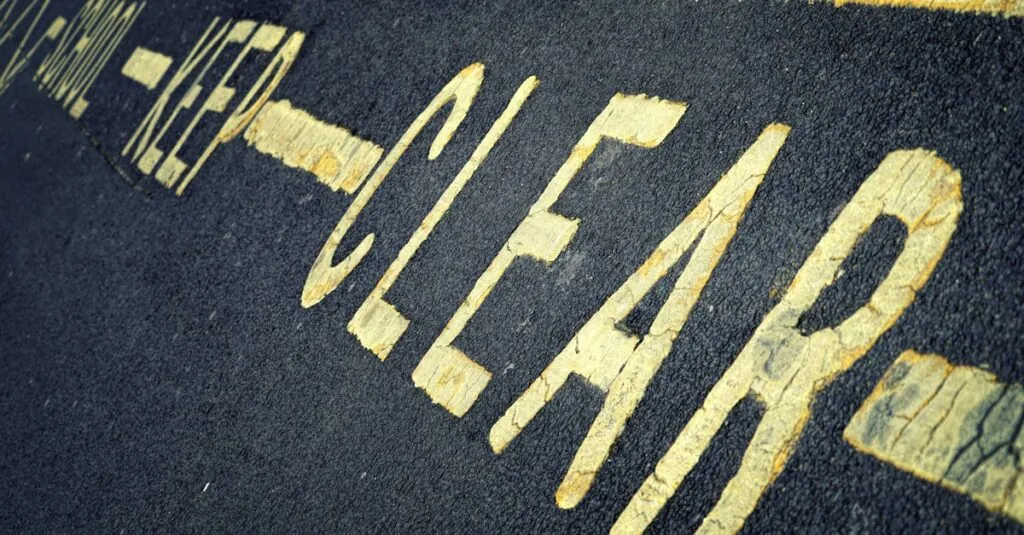Public transportation is the lifeblood of urban mobility, but what happens when that lifeblood gets a little sluggish? That’s where a solid maintenance checklist comes in handy. Think of it as the superhero cape for buses, trains, and subways, ensuring they run smoothly while avoiding those awkward moments when the bus breaks down and everyone looks at their watches in unison.
Table of Contents
ToggleImportance Of Public Transportation Maintenance
Public transportation maintenance ensures smooth operation and reliability for users. Regular checks contribute to passenger safety by reducing the risk of accidents caused by mechanical failures. Maintenance extends the lifespan of vehicles, which results in lower overall costs for transportation authorities.
Scheduling routine inspections helps identify issues before they escalate into serious problems. Trained technicians perform evaluations that include brakes, tires, engines, and electrical systems. Comprehensive record-keeping of these inspections promotes accountability and transparency.
Maintaining cleanliness in vehicles improves the overall experience for commuters. Issues such as litter and unsanitary conditions can deter ridership, impacting city congestion and pollution levels. Cities with well-maintained systems encourage more people to utilize public transport, ultimately enhancing urban mobility.
Energy efficiency often increases through regular maintenance. Transport systems that operate optimally consume less fuel and produce lower emissions, benefiting the environment. Stakeholders, including city officials and residents, recognize the link between maintenance and sustainability.
Investing in preventive maintenance minimizes downtime. Buses and trains that undergo proper upkeep encounter fewer delays, leading to increased customer satisfaction. Timely departures and arrivals enhance the reputation of public transportation networks.
Data-driven approaches to maintenance can optimize service delivery. Analyzing maintenance logs and performance metrics allows for informed decisions regarding upgrades or replacements. Planned maintenance schedules that incorporate this data lead to improved reliability and efficiency.
Effective communication about maintenance schedules fosters trust between transportation authorities and the public. When users are informed, they remain more likely to choose public transport as a preferred mode of travel. Making maintenance a priority reflects the commitment of cities to provide high-quality service.
Key Components Of A Maintenance Checklist
A thorough maintenance checklist ensures public transportation systems stay reliable and safe. It includes tasks performed daily, weekly, and monthly.
Daily Maintenance Tasks
Daily checks focus on high-use components. Operators inspect brakes, lights, and safety equipment to confirm proper functionality. It’s important to clean the interiors and exteriors of vehicles to provide passengers with a pleasant experience. Checks on fluid levels, including oil and coolant, help identify leaks early. Drivers also verify that communication systems are operational, ensuring effective passenger notifications.
Weekly Maintenance Tasks
Weekly responsibilities expand the scope of inspections. Technicians assess tire conditions and adjust pressures as needed, promoting safety and fuel efficiency. Mechanical systems undergo more extensive evaluations, including alignment and suspension checks. Documentation of worn or damaged parts helps track maintenance history and scheduling. Cleaning of exterior components, like windows and headlights, improves visibility and overall maintenance.
Monthly Maintenance Tasks
Monthly maintenance involves in-depth inspections. Technicians examine engine performance and transmission fluids and replace necessary filters to maintain optimal operation. A thorough review of the entire transportation system, including emergency equipment, guarantees readiness for unforeseen situations. Comprehensive records are maintained, facilitating transparency in upkeep efforts. Lastly, keeping track of regular updates or software for transit management systems enhances overall efficiency.
Tools And Resources For Maintenance
Effective maintenance of public transportation relies on specific tools and resources. Proper use of these instruments ensures efficient operation and safety.
Software Solutions
Software solutions have become integral for managing maintenance schedules and tracking performance. Tools like fleet management software allow for real-time monitoring of vehicle conditions and performance metrics. Data analytics features can predict maintenance needs based on usage patterns, which reduces unexpected breakdowns. Additionally, reporting tools enable technicians to document maintenance tasks and identify trends over time. These solutions streamline communication between maintenance teams and management, ensuring everyone remains informed and accountable for service quality.
Physical Tools Required
Physical tools play a vital role in executing routine and corrective maintenance tasks. Essential tools include wrenches, screwdrivers, and torque tools, which allow for comprehensive vehicle upkeep. Diagnostic equipment like OBD-II scanners help technicians assess engine performance. Tire pressure gauges ensure proper inflation, while multimeters check electrical systems functionality. Safety equipment, including gloves and goggles, safeguards technicians during repairs. All these tools facilitate efficient maintenance, minimizing downtime and enhancing overall reliability of public transit systems.
Best Practices For Implementation
Implementing a public transportation maintenance checklist requires careful planning and execution. Prioritize daily inspections to ensure critical components function correctly. Develop a structured schedule that outlines specific maintenance tasks for each vehicle type. Regular communication with maintenance teams establishes clarity on expectations and responsibilities.
Engage staff in training sessions to enhance their understanding of maintenance procedures. Utilize technology to streamline record-keeping and monitoring processes. Fleet management software effectively tracks maintenance schedules and alerts teams about upcoming tasks. By analyzing data, teams can identify patterns in component failures, leading to proactive maintenance decisions.
Encourage a culture of accountability among technicians. Establishing clear documentation protocols fosters responsibility and promotes thorough inspections. After completing maintenance tasks, technicians should log their activities consistently. Initiating regular performance reviews helps assess the effectiveness of maintenance efforts.
Create standard operating procedures (SOPs) for each maintenance task. SOPs ensure every team member follows best practices, minimizing the risk of oversights. Hold weekly briefings to discuss ongoing maintenance needs and share insights from inspections. Addressing challenges collaboratively leads to innovative solutions.
Monitor cleanliness as part of the maintenance routine. Clean vehicles enhance the commuter experience and attract more riders. Schedule deep cleaning every month to maintain high hygiene standards.
Lastly, solicit feedback from passengers about their experiences. Engaging riders in discussions about service quality shows commitment to improvement. Incorporating their input into maintenance planning can reveal valuable insights. Overall, these best practices contribute to the effectiveness and reliability of public transportation systems.
Conclusion
A robust maintenance checklist is essential for the efficiency and reliability of public transportation systems. By prioritizing routine inspections and effective communication, agencies can foster a culture of accountability and transparency. This not only enhances passenger safety but also improves the overall commuter experience.
Investing in maintenance tools and technology streamlines operations and minimizes downtime. Moreover, embracing best practices in maintenance planning ensures that public transit remains a viable and attractive option for urban mobility. Regular feedback from passengers can further refine these efforts, leading to continuous improvement in service quality. Ultimately, a well-maintained public transportation system benefits everyone, contributing to a cleaner and more efficient urban environment.





